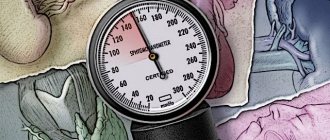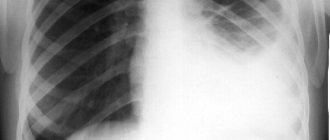What does cholesterol look like?
Many people think of cholesterol as fat and believe that the fattier the food, the more cholesterol it contains. This point of view is only partly justified. Cholesterol is found in the blood and looks like a viscous substance. Cholesterol cannot be considered exclusively harmful, because it is consumed by the body in the process of producing hormones and forming cell membranes. To varying degrees, cholesterol is involved in the functioning of the immune, nervous and digestive systems, so a certain amount of cholesterol must be contained in the body at all times. Another thing is that keeping it within acceptable limits is not always easy.
Excess cholesterol
tends to deposit on the inner walls of arteries.
At first, this is an imperceptible process, but gradually, due to the cholesterol layer, the diameter of the artery narrows, and blood begins to pass through it worse. In places where the vessel narrows, a dense formation is formed from the cholesterol layer, which is commonly called a “ cholesterol plaque
.”
Cholesterol plaques not only almost completely block the flow of blood through the vessel, but also reduce its elasticity. The process of cholesterol formation is called “ atherosclerosis
”.
By themselves, single cholesterol plaques do not pose a serious health hazard, but if you do not take action, over time there will be too many of them. In addition, cholesterol plaque
- This is the initial stage of
thrombus
. Often blood clots form where atherosclerotic plaques were located. The danger of a blood clot is that it completely seals the vessels and can block the flow of blood to vital organs. If a blood clot occurs in a vessel supplying the heart, a person may have a myocardial infarction, and if blood flow stops in a vessel supplying the brain, the person may suffer a stroke.
Does high cholesterol cause death?
Cholesterol itself is not considered deadly. Complications caused by high cholesterol levels can lead to death. We have already named some of them. Atherosclerosis can trigger the development of coronary heart disease, and one of the complications can be myocardial infarction, stroke, acute thrombosis and other diseases. The list can be large and is determined by which arteries were affected.
Is all cholesterol the same?
Cholesterol is found in the blood, but does not dissolve in it. Cholesterol is carried throughout the body by lipoproteins. High density lipoprotein (HDL) molecules
move cholesterol from the arteries to the liver. Later, this cholesterol is excreted from the body and is not deposited on the walls of blood vessels. Such cholesterol is considered “good” because it not only does not increase, but reduces the risk of developing cardiovascular diseases.
Another type of cholesterol carried by low-density lipoprotein (LDL) molecules
from the liver throughout the body. In peripheral tissues, cholesterol gradually settles on the walls of blood vessels, resulting in the formation of atherosclerotic plaques. It is important for a person to monitor and prevent an increase in the level of low-density lipoproteins, or “bad” cholesterol.
Another form of lipids that provide the body with energy, but in large quantities can be harmful, are triglycerides. They are synthesized by the liver or enter the body with food, and then pass into the blood. A high content of triglycerides in the blood is also undesirable, since it can disrupt the functioning of the circulatory system.
Delete and forget?
Patients consider such fat-like yellowish spots to be a cosmetic defect. To remove them, patients turn to cosmetologists, who solve the problem in a matter of minutes using liquid nitrogen, laser or electrocoagulation.
However, this does not solve the problem of high cholesterol.
According to the General Director of the National Medical Research Center of Cardiology, chief freelance cardiologist of the Russian Ministry of Health, Academician of the Russian Academy of Sciences Sergei Boytsov , common lipid stains on the walls of blood vessels are formed at a young age. By the age of 45, small plaques (with a narrowing of up to 40% of the lumen of the vessel) are already present in 50% of men, and by the age of 55 - in 50% of women. By adulthood, almost everyone already has them.
The examination, which helps resolve all issues, includes a biochemical blood test to determine cholesterol levels and a detailed lipid profile.
Shrimp are prohibited. Unexpected foods that increase cholesterol Read more
What increases cholesterol?
Increased cholesterol levels can be due to various factors. The first thing you should pay attention to is your diet
.
If a person has a slight increase in cholesterol levels, doctors usually recommend that they eat less foods high in saturated fat, but certain health problems can also contribute to high cholesterol levels. For example, chronic renal failure or decreased thyroid function. Some people may have high cholesterol levels “naturally” and be inherited. This genetic abnormality is called “ familial hypercholesterolemia
”.
When shaping your diet, you need to remember that cholesterol is found only in products of animal origin. This argument is often made in favor of a plant-based diet by vegetarians. However, this does not mean that if animal food is excluded, the rest of the diet can be uncontrolled. Food fried in vegetable oil and products containing palm oil can also have a negative effect on lipid metabolism.
Who should control cholesterol levels?
Everyone needs to take care of their health. Everyone should undergo a complete examination of the entire body once a year. This can be easily done using blood and urine tests. The procedure does not take much time and gives an idea of the functioning of the entire internal system. If the indicators show the slightest deviation from the norm, the doctor will prescribe an additional examination using ultrasound diagnostic devices or other methods.
But there is a risk group that is recommended to monitor their cholesterol levels. These include:
- Men and women over 40 years old.
- Women taking hormonal contraceptives.
- Anyone with a hereditary predisposition to atherosclerosis.
- Patients with type 1 and type 2 diabetes mellitus.
- Overweight people.
- Heavy smokers.
- Fast food lovers.
In addition, it is necessary for everyone who does not have daily physical activity to donate blood for cholesterol once every three months. This primarily includes office workers, who spend most of their time in chairs in front of the computer. Frequent snacking on floury and fatty foods increases the risk of increasing bad cholesterol levels.
Indicators in the analysis can vary from 3.6 mmol/l to 7.8 mmol/l. Anything above the upper limit requires consultation with a doctor, adherence to recommendations and lifestyle adjustments, including nutrition.
Do healthy people need to monitor their cholesterol?
Often people begin to monitor certain indicators when problems appear and their health worsens, but prevention is always better than cure. The concept of “healthy person” is too general. You may not have liver or metabolic problems now, but that doesn't mean you won't have them in the future. People with identified lipid metabolism disorders should regularly undergo cholesterol tests, but others should not check the strength of their body.
If your diet often contains fatty foods, high-calorie foods, and in general you like to indulge in sweets, then sooner or later this will increase your cholesterol. Other cardiovascular risk factors may also have an impact. As a result, you risk getting atherosclerosis with all the attendant consequences.
Cholesterol norm
If, according to the test results, your cholesterol is normal, then there is no serious cause for concern. Provided you follow the rules of a healthy diet and a healthy lifestyle, the next examination can be done in a few years.
If the cholesterol level is elevated ( from 5 to 6.4 mmol/l or more
), then it’s worth monitoring it every six months to observe the dynamics. At the same time, you need to reconsider your diet, remove foods that increase cholesterol, and also give up bad habits: smoking and drinking alcohol. Your doctor should warn you about additional risks associated with the presence of concomitant diseases.
over 6.4 mmol/l is considered a high-risk level.
. This indicator indicates the need for specialized treatment, since there is a high probability of developing coronary heart disease and other cardiovascular complications. The treatment program should be drawn up by a doctor based on the tests performed, including identifying the level of LDL, HDL and triglycerides.
Symptoms and signs
The external manifestations of high cholesterol in women are extremely difficult to recognize. The detected risk factors may in this case become the main sign of increased levels of organic compounds. For example, a waist circumference in women exceeding 90 cm indicates the presence of high cholesterol in the blood.
It is also important to pay attention to menstrual flow. A sign of an increased level of organic compounds will be excessive consistency and a large number of clots. Often, the presence of varicose veins signals an increase in cholesterol.
Women whose age category exceeds 50 years are often susceptible to increased cholesterol in the blood. This means that when this stage is reached, it is advisable to visit your doctor and undergo the necessary examinations to establish the exact cause of the increased indicator. It is recommended to treat the pathology immediately.
The main symptoms of increased cholesterol in the blood include the presence of:
- pain in the lower and upper extremities (very often pain makes it impossible to perform physical exercises);
- yellow spots around the eyes;
- pain in the chest area;
- a large number of clots in the blood.
Risk group for atherosclerosis
Atherosclerosis
- an insidious disease that develops gradually. Cholesterol level is an indirect indicator of the risk of developing atherosclerosis, but some categories of people need to be tested for cholesterol at certain intervals. The following recommendations are given:
- men over 40 years old;
- women over 45 years old;
- people with diagnosed diabetes;
- overweight people;
- people with diseases of the thyroid gland, kidneys and high blood pressure;
- smokers;
- people who lead a sedentary lifestyle.
It is important to understand that at the first stage of development, atherosclerosis has no visible specific manifestations. A person may not even be aware of the developing disease and the problem with cholesterol. Therefore, doctors recommend regularly donating blood for biochemical analysis.
Causes of high levels of the substance
The main reasons for increased blood cholesterol in women include:
- Having excess body weight and eating a large amount of food per day. Any eating disorder can lead to metabolic disturbances and increased levels of organic compounds.
- Poor nutrition, in which insufficient fiber is consumed, and the menu contains a large percentage of unsaturated fats and carbohydrates.
- The presence of physical inactivity. With insufficient physical activity, all organs and systems suffer, and the metabolic process in the body is disrupted.
- The presence of a pathological process of the endocrine system, which quite often occurs against the background of a hormonal disorder or the development of diabetes mellitus.
- Liver and kidney diseases can often increase cholesterol levels in the blood. Diseases disrupt the production of lipoproteins in the body.
- Unlimited consumption of alcohol, viral pathology or pharmacological treatment often causes stagnation of bile and increased cholesterol.
- Disturbed intestinal microflora and pathological processes in organs, leading to disruption of the synthesis process and destruction of beneficial elements.
The consumption of polyunsaturated fatty acids leads to a decrease and normalization of cholesterol levels
Signs of high cholesterol may not appear clearly for a long time, so doctors recommend listening to your physical condition and responding to any unusual changes.
When should you start monitoring your cholesterol?
It's never too early for prevention. It’s better to get used to monitoring your health from a young age, then it will present you with fewer unpleasant surprises. It is especially important to pay attention to your health after 40 years of age
, this is true for both men and women. In men, coronary heart disease may begin to develop earlier than in women. This is explained by hormonal levels. Women of childbearing age have more “good” cholesterol in their bodies, while in men the preponderance may lean toward “bad” cholesterol. After menopause, women's bad cholesterol levels may also begin to rise along with their triglyceride levels.
If previously it was believed that atherosclerosis mainly affects mature and elderly people, now the disease is diagnosed in younger patients, so it would be reasonable to start controlling cholesterol levels at 30-35 years of age. If the analysis shows that everything is normal, a re-check can be carried out after 3-4 years, but if the cholesterol level is elevated or there is a genetic predisposition to the development of heart and vascular diseases, then it is worth checking the cholesterol level more often.
Do children suffer from high cholesterol?
Cholesterol levels in children, as a rule, do not rise above normal, but they can also be at risk if hereditary hypercholesterolemia is found in their family. In this case, the child will be registered with a pediatric cardiologist from an early age. A cholesterol test should be done at the age of two years, and then repeated periodically.
How to reduce blood cholesterol in women?
The most effective, but not the safest way is to take statins. In high concentrations, the latest generation of drugs can reduce cholesterol levels in women by 50–55%. However, statins have a lot of side effects: from very rare, but extremely dangerous, for example, rhabdomyolysis (destruction of muscle tissue), to simple, but quite common, such as malaise and weakness.
See also:
Cholesterol plaques in blood vessels, their treatment
Aspirin for atherosclerosis
Cholesterol prevention with folk remedies
With relatively low levels of excess LDL cholesterol (5.5 – 6.5 mmol/l), doctors try to prescribe more conservative treatment methods than taking medications: increasing physical activity (reduces LDL levels and increases HDL concentrations, quitting smoking and alcohol abuse (although 1 serving of alcohol - preferably red wine - on the contrary, increases the level of HDL, more details: alcohol and vascular atherosclerosis), changing the diet.
Symptoms of high cholesterol
It is possible to determine the exact level of cholesterol in the body only after an analysis, but there are symptoms that may indicate the presence of disturbances in the functioning of the body. This will not allow you to make a diagnosis, but it should be a reason to visit a lipidologist or cardiologist. Make an appointment for a preventive appointment if:
- physical activity or excessive anxiety provokes the appearance of aching pain in the chest;
- even minor physical activity causes a feeling of lack of oxygen;
- you begin to get tired faster, and fatigue is accompanied by a feeling of heaviness in the chest area;
- you often have a headache for no reason, there is noise in your ears, you feel oxygen starvation to the point of fainting.
If you notice the symptoms described, make an appointment with your doctor. It will be enough to visit a therapist so that he can conduct a preventive examination and, if necessary, refer you to other specialized specialists.
The diagnosis of atherosclerosis is difficult to make without biochemical and instrumental examination, so be prepared for the fact that you will have to undergo a series of tests. The examination usually begins with a blood test and an ECG.
. Then, depending on the results obtained, a treatment program is prescribed, if necessary. The patient’s blood is usually taken from a vein, but if a quick result is needed, it can be obtained using the express method by drawing blood from a finger. To obtain more accurate results, it is recommended to donate blood on an empty stomach.
Increased cholesterol levels
Hepatitis
Atherosclerosis
Diabetes
33981 March 18
IMPORTANT!
The information in this section cannot be used for self-diagnosis and self-treatment.
In case of pain or other exacerbation of the disease, diagnostic tests should be prescribed only by the attending physician. To make a diagnosis and properly prescribe treatment, you should contact your doctor. Increased cholesterol levels: reasons for the increase, what diseases it occurs with, diagnosis and treatment methods.
Definition
Cholesterol is a fat-soluble alcohol molecule and is a very important element of cell membranes, a precursor to hormones. However, as Paracelsus said: “Everything is poison and everything is medicine, only the dose makes it one way or the other.” The same is true for cholesterol. An increase in its level in the blood leads to many diseases, and it is important to control cholesterol levels to prevent, first of all, cardiovascular pathology.
The presence of problems with the metabolism of fats in the body can be indicated by specific external manifestations: subcutaneous deposits of cholesterol under the skin of the eyelids (xanthelasmas) and in the area where the tendons pass (xanthomas); cholesterol deposits can also be detected in the form of a grayish-white rim along the edges of the cornea of the eye.
Types of increased cholesterol
Cholesterol is an indicator of fat metabolism in the body, and it is important to evaluate its level in combination with other indicators of the lipid (fat) spectrum of the blood.
Depending on the ratio of cholesterol and other blood fats, several phenotypes of dyslipidemia (lipid metabolism disorders) are distinguished:
Phenotype I – cholesterol levels are normal or slightly elevated, while triglyceride levels are very high;
Phenotype IIa – cholesterol and low-density lipoprotein levels are increased. This phenotype and all subsequent ones have varying degrees of atherogenicity, that is, they are a factor in the development of atherosclerosis;
II b phenotype - in addition to increasing blood cholesterol levels, the level of triglycerides and low and very low density lipoproteins (LDL and VLDL) increases;
III phenotype - characterized by increased levels of triglycerides, cholesterol and intermediate-density lipoproteins (IDL);
IV phenotype – predominantly increased levels of VLDL and triglycerides;
Phenotype V – the level of cholesterol, triglycerides, chylomicrons and VLDL is significantly increased.
This classification allows the doctor to interpret the results of the lipid profile and provides the opportunity to make the right decision on prescribing lipid-lowering therapy.
Possible causes of increased cholesterol levels in the blood
Lipid metabolism in the body is disrupted due to three groups of factors:
- Hereditary predisposition in combination with unfavorable environmental factors.
- Secondary dyslipidemias are disorders of fat metabolism that occur in various diseases.
- Alimentary dyslipidemia is a change in the balance of fats that directly depends on dietary habits.
More often than others, doctors are faced with nutritional hypercholesterolemia
, which is primarily observed in the first day after consuming large amounts of fatty and fried foods.
If you regularly eat large amounts of fat, then constant hypercholesterolemia occurs.
Primary dyslipidemia
is explained by a mutation in the parents' genes, which is inherited and causes a disruption in the synthesis and use of cholesterol in the body.
Among the causes of secondary dyslipidemias
One of the leading positions is occupied by diseases of the thyroid gland. With hypothyroidism, the content of the hormone T3 decreases, which leads to a decrease in the formation of receptors for LDL and a decrease in the utilization of cholesterol contained in the LDL molecule. Diabetes mellitus also disrupts cholesterol metabolism in the body - blood glucose levels increase, and its utilization occurs through fat metabolism, changing the balance of this system.
Cholesterol is involved in the formation of bile acids, therefore, when the outflow of bile is disrupted, for example, with cholelithiasis, “unused” cholesterol accumulates in the blood.
The opposite situation can develop when liver function is impaired (with cirrhosis, hepatitis) - cholesterol synthesis decreases, and a state of hypocholesterolemia is observed in the blood.
Taking certain medications (beta blockers, glucocorticosteroids, some diuretics, estrogens, immunosuppressants) leads to an increase in blood cholesterol levels.
Arterial hypertension is also a factor that affects the metabolism of fats in the body and increases the risk of developing atherosclerosis. Damage occurs to the vascular wall, where “warrior cells” - macrophages - rush. If the level of cholesterol and other lipid fractions is high, then lipids are captured by these cells. “Fed” cells linger in the vascular wall and gradually form an atherosclerotic plaque.
Metabolic syndrome is another pathological condition that involves increased cholesterol levels in the blood. Metabolic syndrome is a complex of metabolic disorders and hormone regulation, including abdominal obesity, insulin resistance, arterial hypertension and atherogenic dyslipidemia (dyslipidemia phenotype II–V).
The development of metabolic syndrome entails many other pathologies: coronary heart disease, severe forms of obesity, type 2 diabetes, stroke, thrombosis, infertility.
Which doctors should I contact if my cholesterol is high?
An increase in cholesterol levels is a pathological symptom and requires consultation with a doctor - first of all, to identify the causes of this condition. The doctor will prescribe the necessary laboratory and instrumental examinations and refer you for consultations to specialized specialists, among whom may be: an endocrinologist.
Diagnosis and testing for high cholesterol levels
Establishing the cause of increased cholesterol levels is possible only with the help of laboratory research methods. You can suspect an increase in cholesterol levels by the presence of xanthomas and xanthelasmas, as well as by the appearance of symptoms of atherosclerosis and its consequences - coronary heart disease, atherosclerosis of the arteries of the lower extremities. Depending on the symptoms, the doctor may prescribe a set of laboratory and instrumental examination methods:
- (blood glucose levels, control of cholesterol levels, very low, low and high density lipoproteins, blood electrolytes - potassium, sodium, calcium, creatinine levels, liver enzyme levels - ALT and AST, CPK (19) levels of total and direct bilirubin). Cholesterol levels should be checked in children from the age of two if there is a family predisposition to high cholesterol levels;











